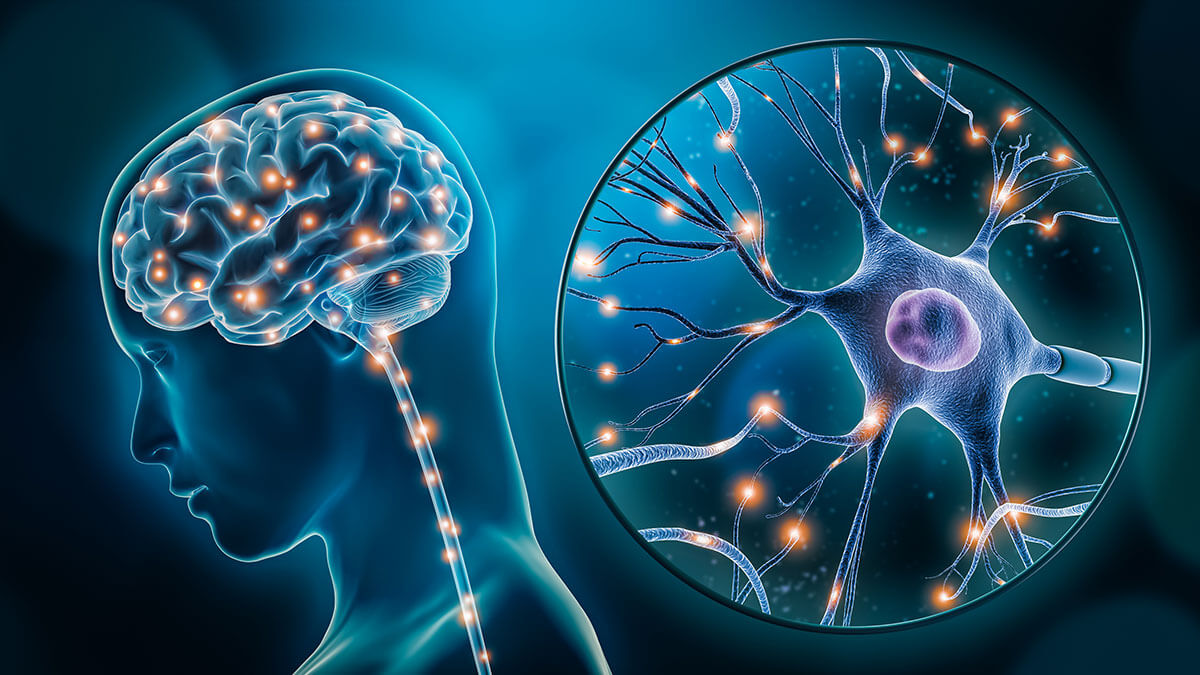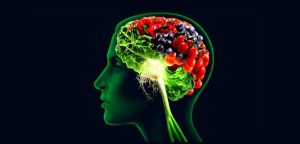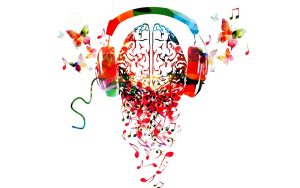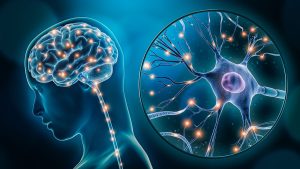Understanding the Basics of Neuroplasticity
Neuroplasticity, also known as brain plasticity, is the brain’s ability to reorganize itself by creating new neural connections throughout life. It involves the continuous process of forming, strengthening, weakening, or eliminating connections among neurons, also known as synapses. This capability holds significant implications for personal development, as it underscores the brain’s capacity to learn, adapt, and recover from injury.
At its core, neuroplasticity gives scientific backing to the old adage, “practice makes perfect.” When we learn new information or engage in novel activities, our brain forms new neural pathways. If we revisit and practice this information or activity, these pathways become stronger. Conversely, when we refrain from certain activities or thoughts, the associated neural pathways weaken over time. This mechanism underlies everything from the development of talents and skills to the formation of habits and personalities.
In neuroplasticity, there are two important concepts: synaptic pruning and neurogenesis. Synaptic pruning is the process where the brain eliminates extra synapses. This process is mostly based on a use-it-or-lose-it principle; those neural connections that are not used gradually disappear. Neurogenesis, on the other hand, is the process where new neurons are generated in certain parts of the brain.
Moreover, the plastic quality of the brain is not uniformly distributed; instead, some areas tend to be more plastic than others. Of special note for personal development, regions involved in higher-order cognitive functions—such as the prefrontal cortex—are particularly susceptible to experience-induced remodeling.
Understanding how neuroplasticity works is fundamental to personal growth and self-improvement. The ability of the brain to reorganize and adapt offers us an opportunity for lifelong learning and mental adaptation, making it possible to transform old, unhelpful patterns of thinking and create new, more beneficial ones.
The Science Behind Neuroplasticity and Brain Development
Neuroplasticity, often referred to as brain plasticity, is the brain’s remarkable ability to reorganize itself by forming new neural connections throughout life. This capability of adaptation and change is driven by information and experiences that contribute to the shaping and reshaping of neural pathways and synapses. Initially, neurologists believed that the brain’s plastic nature was limited to early childhood; however, advancements in neurobiology have confirmed that our brains continue to evolve and adapt throughout our entire lives.
At a fundamental level, neuroplasticity involves two processes: the growth of new neurons, or neurogenesis, and the reshaping of existing connections, or synaptogenesis. Neurogenesis primarily occurs in the hippocampus, a region involved in learning and memory, while synaptogenesis involves the strengthening or weakening of synaptic connections, influenced by activity and experience. For instance, when one repeatedly practices playing the piano, the related neural connections strengthen, leading to improved performance.
A pivotal discovery that demonstrated neuroplasticity involved studies in the brains of London taxi drivers. Their hipposcampi, the area responsible for spatial navigation, were found to be more developed than those of other individuals. This demonstrated that continuous practice and experience in navigating through the complex streets of London led to a physical change in the drivers’ brain structure.
It’s also essential to consider the contribution of environmental and emotional factors to brain development. Stress and trauma can lead to decreased hippocampal volume, impairing memory and learning. Conversely, a positive and enriching environment can enhance neuroplasticity, promoting better cognitive functioning. Neuroplasticity, thus, provides a neurological basis for the notion how thoughts, experiences, and behaviors mold and modify the brain continually.
Understanding the science of neuroplasticity and its role in brain development is crucial as it can promote beneficial changes in the brain, helping individuals better manage stress, learn new skills, and adapt to new situations. Furthermore, therapeutic techniques based on neuroplasticity principles, such as cognitive-behavioral therapy and mindfulness practices, are proving instrumental in treating various mental health disorders and enabling personal growth and self-development.
The Role of Neuroplasticity in Learning and Memory
Neuroplasticity refers to the brain’s capacity to change and adapt in response to experiences, and it plays a critical role in learning and memory. When we learn new information or skills, existing neurons form new connections with other neurons, creating a network of linked neurons called ‘neural pathways’. This process of forming new connections is known as ‘synaptic plasticity’. The information is stored in these neural pathways, which essentially allow the brain to ‘remember’.
The stronger and more frequently used these neural pathways are, the more efficiently information can be retrieved. In other words, repetition or practice strengthens these connections and makes the path of recall smoother and faster. This process, also known as ‘consolidation,’ is vital for long-term retention of learned information.
On the other hand, unused or underutilized connections tend to weaken over time. This is a phenomenon that supports the saying “Use it or lose it,” emphasizing the importance of consistent learning and cognitive stimulation in keeping our brain’s neuroplasticity active and robust.
Interestingly, neuroplasticity is not limited only to cognitive learning. Experiential learning, such as physical skills and sensory experiences, also depend on neuroplasticity. For instance, when someone learns to play a musical instrument, the brain’s manual dexterity and auditory regions adapt and strengthen in response to this new stimulus.
In sum, by exploiting the neuroplastic capacity of our brains through targeted and continual learning, we can enhance our cognitive abilities, master new skills, and improve our memory. It provides us with a powerful tool in personal development, as learning doesn’t stop at childhood but continues throughout our lives.
Changing Your Brain: How Neuroplasticity Affects Behavior
The phenomenon of neuroplasticity, the brain’s remarkable ability to rewire and restructure itself, holds profound implications for our behaviors, habits, emotional responses and overall well-being. Any form of learning or practice brings about neural changes by strengthening the connections between neurons or forming new ones, solidifying these pathways into automatic routines or habits. This mechanism is central to our adaptation capabilities and skill acquisition, but it also frames our behaviors, both positive and negative.
Fundamentally, our incredibly plastic brain molds and changes in response to our experiences, perceptions, and thought patterns. If we consistently react to certain situations with anger, anxiety, or unhappiness, the neural pathways responsible for these responses are reinforced, thereby perpetuating undesirable behaviors and emotional patterns. Conversely, we can actively guide positive behavioral shifts through our thought processes and actions.
Engaging in consistent, focused, and intentional practices such as mindfulness or cognitive-behavioral techniques can stimulate neuroplastic changes that foster new, beneficial habits, thereby rewriting ingrained negative patterns. By invoking mindfulness, we become more aware of our automatic reactions and in turn become capable of introducing desired changes. Similarly, cognitive-behavioral approaches work by actively challenging harmful thought patterns and replacing them with healthier alternatives.
A noteworthy illustration of this lies in the therapeutic effect of psychotherapy where new connections in the brain are established as a result of talking and thinking about experiences in new ways, thereby changing how we feel and behave. When such adaptive behaviors are repeated and reinforced, they catalyze lasting changes in the brain structure through neuroplasticity.
Utilizing our understanding of neuroplasticity for personal development involves recognizing that change is not only possible but fundamental to the brain’s nature. By consciously directing our thoughts, behaviors, and emotions, we cultivate neural pathways that promote well-being, resilience, and positive transformation, demonstrating the interweaving dance between our brains and our lived experiences.
The Impact of Neuroplasticity on Personal Growth and Development
Understanding neuroplasticity introduces new angles in personal growth and development paradigms. It has fundamentally changed the concept that the brain, once fully developed, was a statically structured organ. Now, it is recognized that the human brain continuously evolves, reshapes and reorganizes itself throughout a person’s lifetime. This flexibility of the brain creates an excellent gateway to personal development, as learning new skills, habits, or languages triggers the creation of new neural pathways, strengthening mental abilities and cognitive resilience.
Neuroplasticity, with its enabling facility for change, can lead to powerful transformations in personal behavior. When we continually expose ourselves to new stimuli or embrace habitual routines, the brain adjusts and develops neuronal networks to match these changes. As such, neuroplasticity can influence our capacity to adapt to fresh environments, manage stress, and overcome emotional or physical trauma. This adaptability has immense implications for self-improvement and the capacity to hurdle life challenges.
Moreover, the power to ‘rewire’ one’s brain can be leveraged to encourage successful habits and behaviors. For example, by consciously integrating positive thought patterns and behaviors into daily routine, these actions can become ‘hardwired’ into the brain’s structure. This essentially means that positive traits can eventually become automatic, enhancing one’s emotional intelligence and well-being and encouraging personal growth.
Neuroplasticity’s impact on personal development can also be seen in aspects of learning and memory. New information can be integrated and stored more efficiently with continuous, targeted brain training, impacting academic performance, professional growth, and the acquisition of new skills. Simultaneously, the brain’s ability to “unlearn” unproductive or harmful habits plays a significant role in fostering holistic wellness and balanced, healthier living.
Understanding neuroplasticity redirects personal development’s focus towards persistence and consistency, rather than innate talent. It implies that the brain can adapt and augment paramount capacities regardless of age, rendering personal growth as a continuous possibility throughout life. This perspective instills a growth mindset, promoting lifetime learning, increased resilience, and a more profound capacity for innovation and transformation.
Neuroplasticity in Resilience and Overcoming Life Challenges
Understanding how neuroplasticity contributes to resilience and overcoming life challenges provides crucial insight for personal development. Individual resilience, often defined as the capacity to rebound from adversity, stress, and life-changing events positively, has a strong correlation with neuroplasticity. This mental elasticity is precisely what enables individuals to bounce back from setbacks; neuroplasticity allows our brains to adapt, change, and find new pathways to happiness and success despite the hurdles we encounter.
When a person experiences a challenge, stressor or setback, the brain naturally starts looking for solutions and learning from the situation. This involves a high degree of neural plasticity as new pathways are created to accommodate the new experiences and learnings. For instance, this could mean developing a new skill to face a career challenge or learning to deal with grief in the aftermath of a personal loss.
Neuroplasticity over time strengthens these new neural connections, effectively creating resilient traits in an individual. This resilience isn’t solely about bouncing back, but also strengthening the capacity to cope, adapt and thrive amidst adversity. Importantly, resilience is not a static state but a dynamic life-long process, closely connected with the concept of neuroplasticity.
Mindfulness practices and cognitive behavioral therapies, known to promote neuroplasticity, can be effective in nurturing resilience. Both these practices involve creating a greater awareness of one’s thoughts and emotions, enabling an individual to better understand, control and change their reactions to real-life situations. By engaging our neuroplastic capabilities, we can rewire our brain to be more adaptable and resilient in the face of challenges.
Exposing oneself to fresh experiences, varied challenges and even periods of manageable stress can stimulate the brain’s plasticity. Such exposure can lead to greater personal growth, broadening one’s understanding and knowledge of the world, thereby leading to deeper resilience. Hence, understanding and harnessing neuroplasticity becomes a meaningful process in overcoming challenges and building stronger resilience.
Strategies to Enhance Neuroplasticity for Personal Development
Improving your brain’s neuroplasticity is instrumental for personal growth and development. The brain’s ability to form new neural connections throughout a person’s life is a significant factor in resilience, learning and mental health. Here are seven strategic ways to enhance neuroplasticity.
First, include physical exercise in your daily routine. Regular physical activity increases the formation of new neuronal connections, enhances cognitive functions, and reduces stress. Whether it’s yoga, aerobic exercises, or simply walking, any kind of physical activity can have positive effects on your brain.
Second, maintain a balanced diet. Consuming foods rich in omega-3 fatty acids, antioxidants, vitamins, and minerals can help improve brain function and support neuroplasticity. Omega-3 fatty acids, which can be found in foods like fish and flaxseeds, are particularly beneficial as they assist with the formation of new neurons.
Third, embrace lifelong learning. Engaging in continuous education, learning new skills, languages, or musical instruments, for instance, promotes cognitive flexibility and encourages the formation of new synaptic connections. In addition, it can help delay cognitive decline in later life.
The fourth strategy is mindfulness and meditation. These practices can promote neuroplasticity by developing areas of your brain that control emotions, awareness, and concentration. Regular meditation can reduce stress, enhance cognitive function, and improve emotional health, thereby creating a healthier environment for the brain to grow and adapt.
The fifth method suggests getting enough sleep. During sleep, the brain strengthens the neural patterns it has learned during the day. Sleep deprivation, on the other hand, may inhibit neuroplasticity and cognitive functions such as memory, attention, and creativity.
The sixth strategy is to manage stress effectively. Chronic stress can damage the hippocampus – the brain’s memory center, inhibiting neuroplasticity. Therefore, it’s crucial to use stress management techniques such as deep breathing, yoga, or relaxation exercises to mitigate the effects of stress.
Building and maintaining healthy social relationships can also boost your brain’s neuroplasticity. Social interaction requires complex brain functions like listening, understanding, and responding, all of which strengthen neural networks. A strong social network also provides emotional support, reducing the stress that can inhibit neuroplasticity.
By integrating these strategies into your life, you can improve your neuroplasticity and pave the way for continual personal growth and development.
Leveraging Neuroplasticity for Mental Health
Understanding our brains’ inherent capacity for change allows for revolutionary approaches to improving mental health. First off, mindfulness habits like meditation and yoga play a significant role in leveraging neuroplasticity. By continually focusing on the present moment during these practices, you can rewire your brain to become more content in the here and now, reducing worries about the past or future.
Cognitive Behavioral Therapy (CBT) is another effective tool. CBT can invoke changes in brain structure, improving issues like anxiety and depression. The process involves identifying negative thought patterns and practicing strategies to challenge and change them. Over time, this process can help to shape your neurons in a way that makes these healthy thought patterns more automatic.
Does this mean a complete transformation is possible overnight? No, but it’s important to understand that intentionally nurturing healthier, happier mindsets are not futile efforts – they create actual physical changes in the brain. Furthermore, it should acknowledge that recovery and growth demand patience and perseverance.
In addition to these techniques, it’s also important to maintain a balanced diet, regular exercise, and adequate sleep. These are not just good for the body, but also the brain. Physical activity spurs the creation of new neurons, thus facilitating mental agility. Adequate sleep boosts brain plasticity, while a healthy diet provides critical nutrients for optimum cognitive function.
Neuroplasticity underscores a hopeful message: change is possible at any age. Whether you’re seeking to overcome mental health issues or striving for personal development, the brain’s plastic nature can be your greatest ally. Harnessing neuroplasticity might seem daunting, yet it is an accessible and effective route to enhanced wellbeing and mental health.
The Intersection of Neuroplasticity and Spirituality
Exploring the realm of spirituality may initially seem disconnected from the concept of neuroplasticity, which is rooted in the physical realm. However, deeper insight reveals that the two domains are fundamentally intertwined. Spirituality, defined as a sense of connection to something bigger than ourselves, often requires the practice of mindfulness, meditation, and self-awareness. These practices are known to physically alter the brain, thus signifying the influence of spirituality on neuroplasticity.
Meditation, a commonly adopted spiritual practice, holds immense potential for driving neuroplastic changes. Regular meditative practices can trigger changes in the brain’s structure and function, particularly in regions associated with attention, interoception, and sensory processing. Additionally, mindfulness – the act of being intensely aware of what you’re sensing and feeling at every moment, without interpretation or judgment, fosters intentional thought patterns that can reshape neural pathways.
Spiritual beliefs and practices, by contributing to a positive emotional state, can promote the release of certain neurotransmitters associated with feelings of well-being. This not only reinforces beneficial neural pathways but also strengthens the bond between spirituality and neuroplasticity.
Redirecting thoughts and iterating positive affirmations, a common tool in spiritual teachings for transforming one’s reality, draws upon the same principles of neuroplasticity. Continuous repetition of positive thoughts and affirmations creates new neural pathways, trades negative thought patterns with beneficial ones, and establishes a healthier emotional homeostasis.
While spiritual practices allow us to connect with our deeper selves and the outer universe, they also significantly alter our brain’s physical structure and workings. The interplay of these dynamics underscores the integrated approach necessary for holistic personal development.
Maximizing Your Potential with Neuroplasticity: Practical Steps
Understanding and harnessing the power of neuroplasticity can be the game-changer in one’s personal development journey. By being proactive and taking practical steps, you can foster positive neuroplasticity and bring about a significant transformation in your life.
Firstly, the key to engaging neuroplasticity lies in challenging your brain regularly with new experiences and learning. This could be pursuing a new hobby, learning a new language, or pushing yourself to solve complex puzzles. By doing so, you not only broaden your horizons but also stimulate the brain to form new connections.
Secondly, meditation and mindfulness practices also play a significant role in promoting neuroplasticity. Regular meditation is shown to lead to increased gray matter in the hippocampus and frontal areas of the brain, thereby enhancing self-awareness and empathy.
A third practical step is physical exercise. Regular physical activity stimulates neuron production and reduces the risk of cognitive decline and mental disorders. By integrating exercise into your daily routine, you not only benefit your body but also your brain.
Finally, maintaining a healthy diet rich in omega-3 fatty acids, antioxidants, and vitamins is crucial for optimum brain health. Such nutrients support neuron growth and improve cognitive functions.
Remember, the science of neuroplicitiy implies that our brains are constantly changing. And with conscious effort, it is possible to guide these changes in the direction of personal growth and fulfillment. As the saying goes, “Use it or lose it.” The same applies to our brains, where lifelong learning and healthy habits can keep it sharp and flexible.








